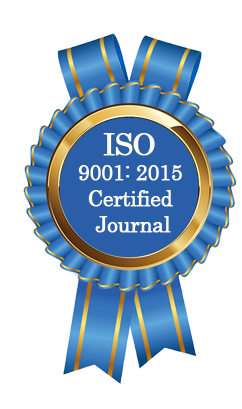| All | Since 2020 | |
| Citation | 105 | 60 |
| h-index | 4 | 4 |
| i10-index | 3 | 2 |
WJAHR Citation 
Login
News & Updation
Best Article Awards
World Journal of Advance Healthcare Research (WJAHR) is giving Best Article Award in every Issue for Best Article and Issue Certificate of Appreciation to the Authors to promote research activity of scholar.
Best Article of current issue
Download Article : Click here
Indexing
Abstract
MUSCULOSKELETAL DISORDERS IN CLINICAL DENTISTRY: HOW TECHNOLOGY CAN SAFEGUARD YOUR DENTAL TEAM
*Dr. Jay Rashmikant Sejpal (BDS)
ABSTRACT
The practice of dentistry by all members of the clinical team involves static posture, precise and repetitive motions, long work hours, and suboptimal ergonomics.[1,2] The prevalence of musculoskeletal disorders (MSDs) among dentists and dental hygienists can range from 64% to 93%, with prolonged static postures (PSPs) and repetitive movements being listed as major risk factors. 3-5 More troubling were the results of a study in the United Kingdom that found that MSDs were the most frequent cause of premature retirement among dentists.[6] The World Health Organization defines work-related MSDs as “disorders or injuries affecting muscles, tendons, joints, ligaments, and bones mainly caused by mechanical overload of the respective biological structures. Potential overload of tissues results from high intensity forces or torques acting on and inside the body.”[7] The types of MSDs in dentistry broadly fall into 3 categories:1. neck and shoulder disorders, hand and wrist disorders, and back disorders.2. Focusing specifically on hand and wrist disorders, dentists and dental hygienists suffer from more hand, wrist, and arm pain than the general population.[8-10] Carpal tunnel syndrome (CTS) is the most common MSD within the hand and wrist disorder category and is caused by compression of the median nerve, causing symptoms to include numbness, tingling, or pain in the thumb, index finger, middle finger, and half of the ring finger. There are many suspected causes of CTS, and besides a history of trauma to the wrist, contributing factors can include an overactive pituitary gland, an underactive thyroid gland, and rheumatoid arthritis.[10] Females are 3 times more likely to develop CTS, with diabetic and obese individuals also being at increased risk.[11] General work-related risk factors for CTS include mechanical stress to the hand and wrist, forceful exertion, repetitive motions, and PSP.[7] In dentistry, activities such as forceful gripping of small instruments, flexing the wrist forward, vibration, and repetitive motions for long periods of time have been implicated in the development of CTS symptoms.[8,11]
[Full Text Article] [Download Certificate]
